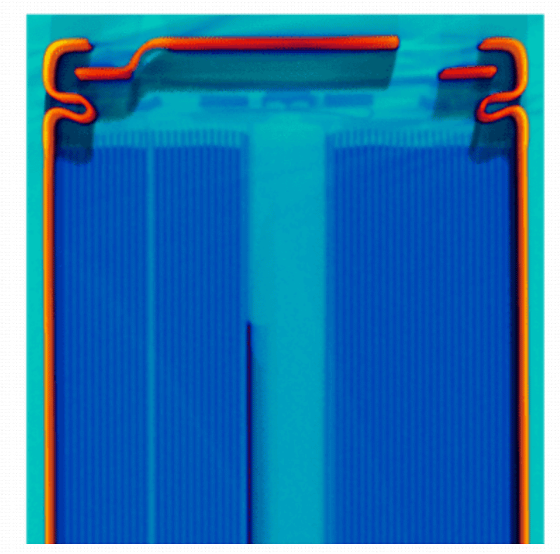Impressive images of CT scans of alkaline batteries and lithium-ion batteries

There are many opportunities to use batteries in daily life, such as dry batteries and PC batteries. Batteries are protected by a tough outer shell, so even if you want to know what kind of structure they have, you can't easily reveal the structure. The internal structure of such a battery was published on the website `` scanofthemonth.com '', which has published CT scan images of
Safely see inside Lithium-ion, LiPo, and alkaline batteries.
https://www.scanofthemonth.com/scans/batteries
By accessing the above URL, you can check CT scan images of alkaline batteries, lithium-ion batteries, and lithium-ion polymer secondary batteries (LiPo) in order.

Below is a scanned image of the circular part of the alkaline dry battery. A steel material with a thickness of 250 micrometers is used for the outermost outer can, with manganese dioxide (positive electrode) inside and zinc (negative electrode) inside.

Looking from the side it looks like this. The central elongated bar is a brass bar.

Next, we will CT scan the internal structure of lithium-ion batteries used as batteries for smartphones and electric vehicles.

The image scanned from the circular side is below. The exterior looks like an alkaline battery, but the inside is packed with concentric layers.

Looking from the side it looks like this. The tightly packed layer consists of 'positive electrode', 'separator' and 'negative electrode'. According to scanofthemonth.com, this layer structure is very fragile, and if the layer structure breaks, there is a danger of short circuit and explosion.

Finally, we will observe the internal structure of a lithium-ion polymer secondary battery.

A CT scan of the edge of the lithium-ion polymer secondary battery reveals that the ``positive electrode'', ``separator'' and ``negative electrode'' form a layered structure similar to a lithium-ion battery.

If you change the angle and observe it, you can see that the positive and negative electrode layers are tightly packed. Each layer is 100-150 micrometers thick, but each layer is known to swell from time to time as it is composed of highly volatile materials. Scanofthemonth.com appeals that finding signs of swelling by CT scanning will help in safe battery management.

Related Posts:
in Hardware, Posted by log1o_hf







